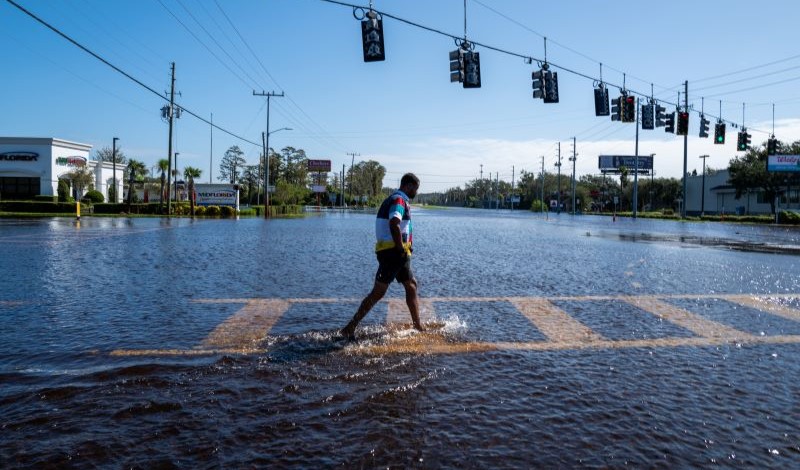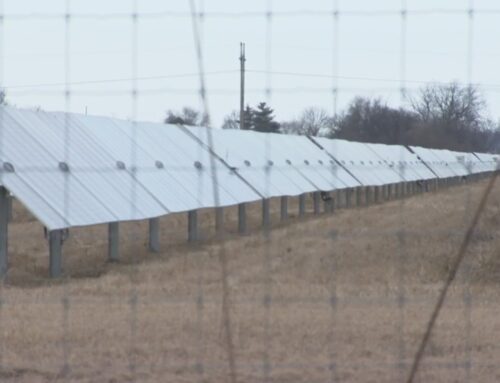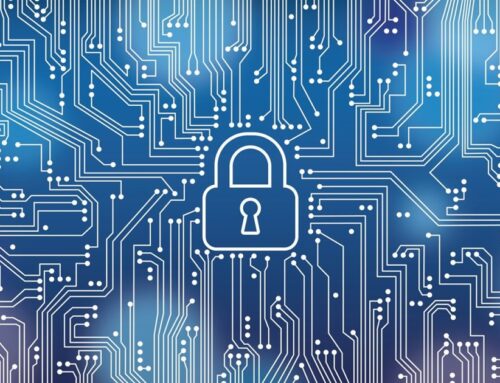Climate Resilience Requires Digital Justice
May 19, 2025

Equal access to technology is a necessary but overlooked part of responsible environmental regulation.
As the United States braces for what is likely to be another record-setting hurricane and wildfire season, one critical issue remains largely overlooked in emergency planning: the digital divide. In many of the country’s most climate-vulnerable areas, particularly across the American South, limited internet access is silently undermining disaster resilience and deepening environmental injustice.
Although climate policy discussions frequently highlight emissions reduction and energy transition, policymakers often overlook a foundational requirement for adaptation: access to information. In communities without broadband or digital literacy, missing a weather alert, failing to register for evacuation, or not knowing how to apply for disaster aid can be a matter of life or death. This disparity is not simply about convenience—it is about rights and survival.
The Undivide Project, which I direct, launched the Ten States Project to study the digital disparity. Our team conducted interviews with emergency managers, surveyed national and regional stakeholders, and reviewed over 190 laws and policies related to disaster response, digital infrastructure, and environmental justice. From this study of Alabama, Georgia, Louisiana, Texas, Virginia, and five other states, we found that digital exclusion is not adequately recognized in disaster law and communities without digital access are being structurally excluded from resilience planning.
These communities—many of which are predominantly Black and low-income—are not just underserved; they are systematically excluded from the tools, information, and legal protections necessary to survive a climate emergency. The failure to treat broadband access as an essential utility and emergency service is worsening the climate resilience gap in America.
Our legal review revealed that most state emergency statutes focus almost exclusively on reactive measures, such as declaring a state of emergency, activating the National Guard, or suspending regulations. Fewer than 10 percent of the legal instruments we analyzed mentioned environmental justice. None explicitly addressed digital access.
The Federal Emergency Management Agency (FEMA) does not currently fund broadband infrastructure as a disaster resilience strategy, despite increasing reliance on digital registration, alerts, and reporting. Without policy change, communities already marginalized by race, income, and geography will remain last in line for assistance—and first in line for disaster impacts.
Consider Alabama’s Black Belt region, where more than 30,000 homes have failing septic systems that are worsening due to increased rainfall. A now-terminated U.S. Department of Justice investigation found that the state’s failure to address wastewater infrastructure in Lowndes County constituted a civil rights violation. Residents in this region are also among the least digitally connected in the nation—many do not have reliable access to email or internet-enabled devices. When disaster strikes, they are cut off twice––first by infrastructure, and then again by information.
In Louisiana, redistricting disputes have diluted the voting power of Black communities along the Gulf Coast, while toxic industries continue to expand in “cancer alley.” In Texas, communities of color disproportionately suffered during the Great Freeze of 2021, and many were left without digital access to information about warming centers, emergency benefits, or infrastructure outages. These cases are not outliers—they are the product of a systemic failure to integrate digital equity into environmental and disaster law.
Climate resilience requires more than levees and carbon markets. It demands governance models that recognize digital infrastructure as essential to disaster response, community agency, and adaptive capacity. Legal scholars and regulators must begin treating broadband like electricity or water—a necessary condition for public safety and access to emergency services.
We propose a new framework: digital equity as a climate adaptation imperative. This means incorporating digital inclusion into the legal definitions of “resilience” and “mitigation” in state and federal codes. It means requiring environmental justice assessments to include digital exclusion. It means directing resilience funding to places where climate and digital vulnerability overlap.
Some states are taking steps in this direction. Virginia passed the Environmental Justice Act in 2020, which defines “fenceline” vulnerable communities and created an Office of Environmental Justice within its emergency management agency. North Carolina incorporated digital infrastructure planning into its resilience funding strategy. But without federal agency action and statutory mandates, these state efforts remain fragmented and insufficient.
The U.S. Department of Homeland Security and FEMA should recognize digital infrastructure as eligible under mitigation grant programs. This includes broadband deployment, hot spot expansion, and digital literacy training for disaster preparedness.
Environmental regulators across federal agencies should treat digital access as a factor in environmental justice reviews. For example, the U.S. Environmental Protection Agency could update its—recently removed—equity screening tools to include digital exclusion as a risk multiplier.
To supplement agency efforts, the U.S. Congress should modernize disaster law to reflect digital dependence. Updating the Stafford Act for example, to include digital equity and removing administrative barriers to broadband resilience projects would expand legal protections to communities that are currently excluded.
Voting rights protections enacted by Congress should also include digital participation safeguards. Communities must be able to engage in climate-related policy debates and disaster planning. Digital disenfranchisement undermines civic engagement and climate governance.
Ultimately, the digital divide is not just a technology issue—it is a governance issue. It reflects who has access to safety, who is heard in times of crisis, and who is left behind. As we prepare for a future of escalating climate extremes, we must ensure that digital equity is part of every emergency plan, every resilience policy, and every legal reform.
Environmental and disaster regulators have a responsibility to act. Without a new legal and policy framework that connects digital equity to climate resilience, America’s most vulnerable communities will remain dangerously exposed—and unheard.
Search
RECENT PRESS RELEASES
Related Post




